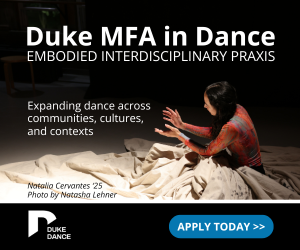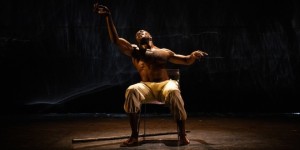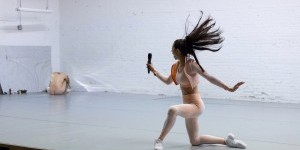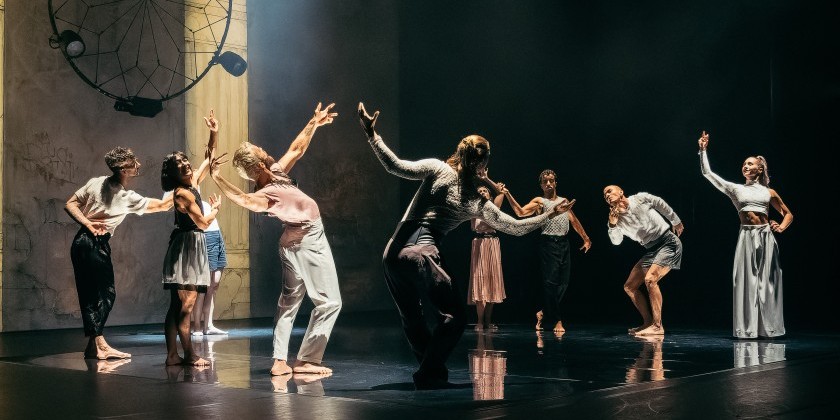SUMMER IMPRESSIONS: Experimentations Run Wild, from Fresh Tracks to the Beach Sessions
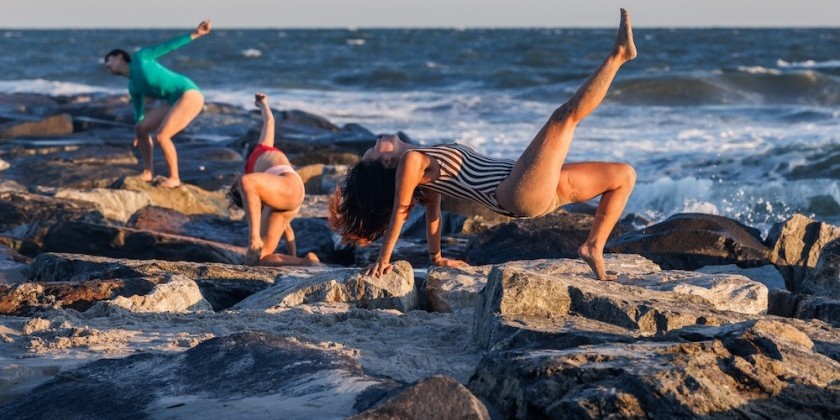
Fresh Tracks Artists, NYU Dance in "Quartet," Tamás/Tanya Marquardt’s “CREATURE," Stacy Grossfield’s “metamorphosis III," and Kim Brandt’s “Wayward"
New York summer is a dance of its own — working and playing, running and wandering. And sweating. No matter what you’re doing. Sweating.
I love summer. It makes me hungry. Ravenous, even. So I’ve spent my summer dancing to a different rhythm than those other, more civil seasons. In studios, on stages, in audiences, in laboratories and exhibitions and museums and bookstores and bars and cities and towns and parks and plazas and beaches and seas — most especially those cool, glorious, salty seas and infinite skies.
The summer dance calendar dances to its own rhythm too. It can be far flung — Jacob’s Pillow, Kaatsbaan, Fire Island, American Dance Festival — or as close by as your local park. There’s something feral about its immediacy, its highly public displays and site specificity. There’s also lots of process afoot: open rehearsals and showings and experimentations run wild in this fertile season. Days are long, responsibilities are shifted, bodies are limber, the blood is hot and close to the surface. I love this experience in my body, and I love to experience other artists feeling this feeling: beside me on the studio floor (sweating), before me on stage pouring out their grace (sweating), clustered in a collectivity of witnesses (also, much of the time, sweating). These summers bind us. They fortify us. And there’s just so much to see and do. For now, I reflect...
June 13, 2025: New York Live Arts’ annual Fresh Tracks residency performance program marks the headlong slide from spring into summer. This year’s cohort takes on a consummate spirit of experimentation, each commanding and transforming the stage with their unique voice.
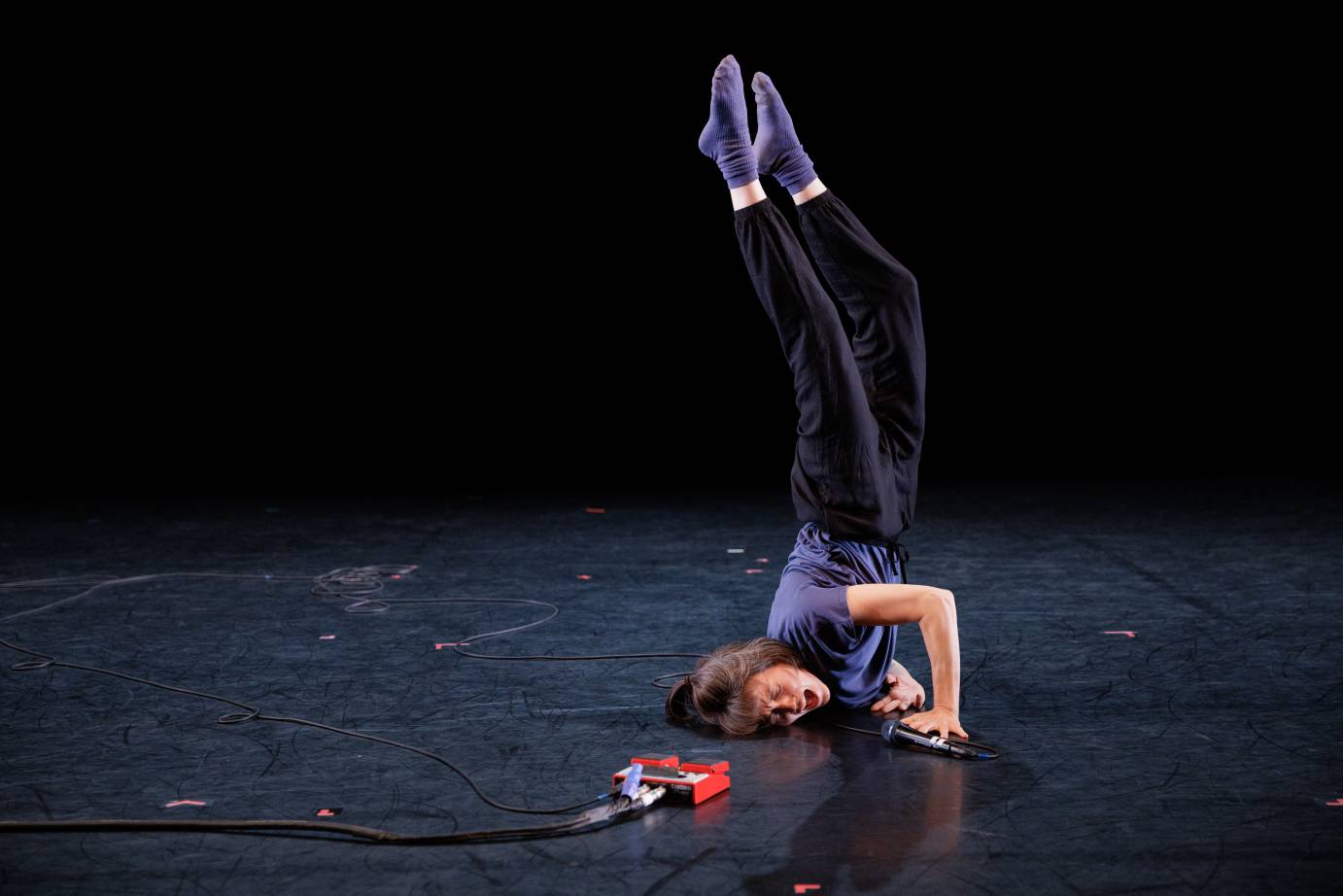
In “to:dance,” ayo ohs exercises failure and triumph in a sparkling solo confessional told through intimacies, distortions, and exaggerations in song and dance, shot through with intimately-crafted gestures of desperation and determination.

Kashia Kancey’s quartet “I’m in the Middle of the Ocean, and I Can’t See You” touches the pain, longing, and catharsis of self-exploration through the trappings of feminine iconographies. Intense, rhythmic breathwork sets rebellious, serpentine spines alight through a series of eerie and trancelike scenes.
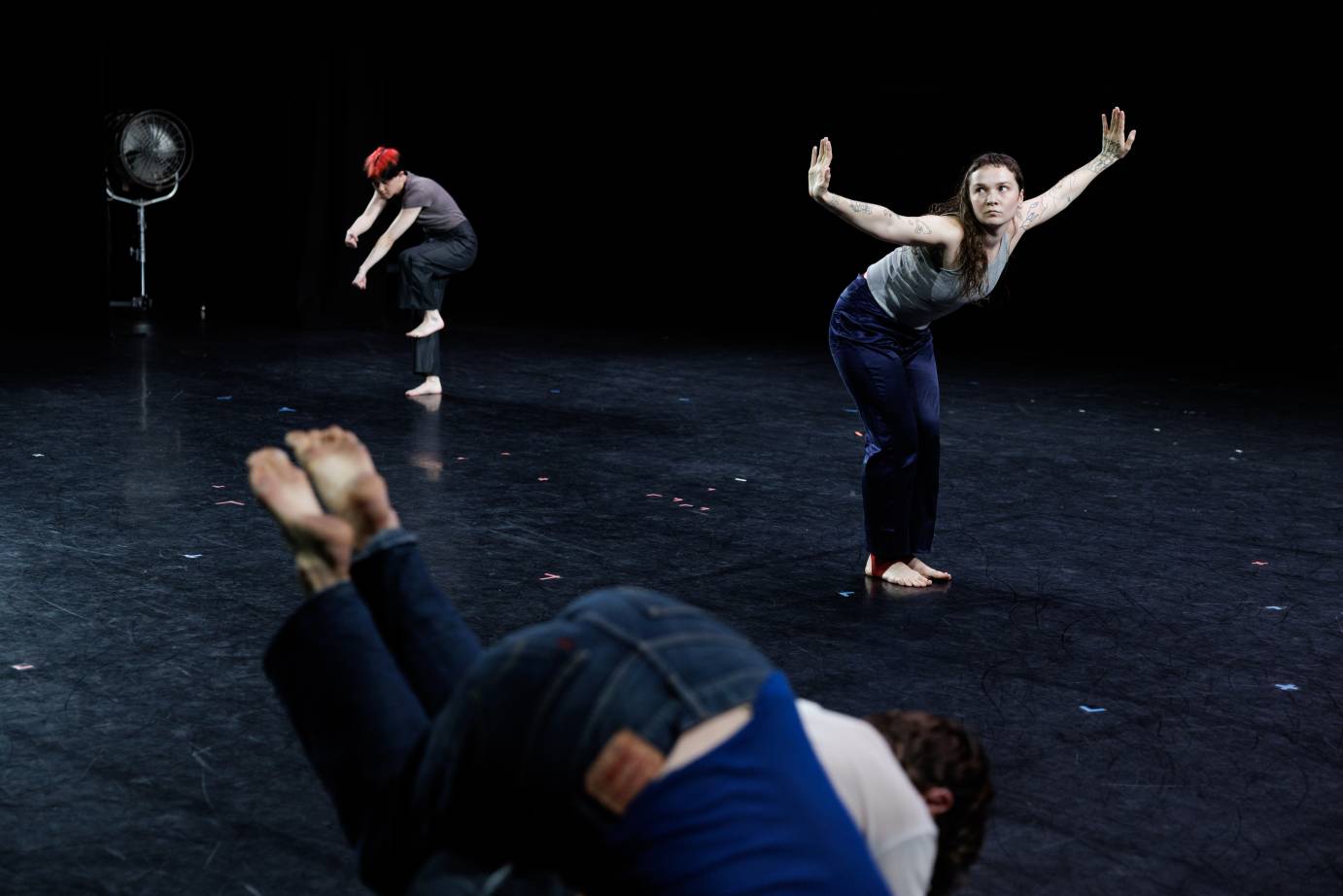
Jade Manns offers “Superposition,” an abstractly visceral quartet of quiet persistence, agile power, and compositional rigor. Images bloom slowly in a sustained yet unforced drama, their unadorned immediacy taking hold through repetition and juxtaposition in a fractured yet harmonious stage space.

Maxi Hawkeye Canion’s solo “flesh-talker” focuses vivid imagination into the dreamspace of a masked demonic figure whose contortions and confessions are haunted by flickers of memory. Glitches open spaces for dissociation and integration to tangle and merge, blurring illusory boundaries of sense and self.
In this wildly varied cohort, each of the Fresh Tracks artists flex their curiosity with verve and purpose — there’s certainly more where that came from.
July 17, 2025: “Quartet” at the NYU Department of Dance’s dressed-down Atlas Theater, features Allen Fogelsanger (melodica and electronics), Nicholas Handahl (flutes), and dancers Alexandra Berger (cool and solid) and Salma Kiuhan (smoldering and soaring). Their collaborative, improvised compositions spring from years of tandem investigations; they play in earnest, each with their own virtuosities, to communicate through clear yet malleable structures and themes.
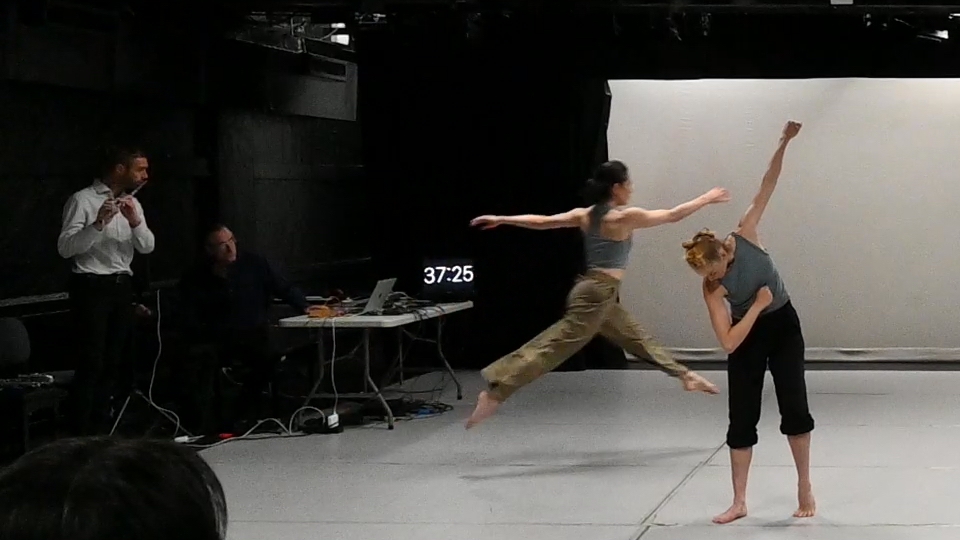
Through a series of duets and trios that culminate in an open-ended quartet, the artists tease and stretch and volley sounds and movement to launch each other into a higher plane of focus in the present moment. It’s a transparent exercise in creative conversation in real time — always unpredictable and always satisfying in its sheer liveness.
July 26, 2025: Tamás/Tanya Marquardt’s solo performance “CREATURE” at Mabou Mines explores the curious entanglements in their journeys of queer and ancestral self-discovery, centered on the legényes, a Magyar-Hungarian folk dance. Marquardt’s deeply honest monologues glint with incisive edge and dark humor, meandering from childhood memories through a rowdy, itinerant youth, and queer journeys through London and Budapest, peppered with forays into folk tales and queer histories.

The legényes, a high-stepping, thigh-slapping rhythmic “lad’s dance” traditionally performed by men for men, grounds Marquardt’s framing of their transmasculine identity through their Magyar lineage. The dance fits them — their long, tall, rangy body, the power of their sure feet on solid ground — and lends a physical gravity to their elaborations of so much that never fit in their life and in the lives of other “creatures.” In Marquardt’s varied readings, “CREATURE” encodes the queer, the trans, the fantastical, and everything in between: freaks and marvels, the uncategorized and the unexplained, always pulsating with stubbornly resilient life. Vulnerability becomes a means of subversion, a mode of recognition, and a channel for survival as the artist maps queer synchronicities across time, space, genre, and experience. Marquardt proves that if you look deep, reach out, and dance hard, you’re never alone.
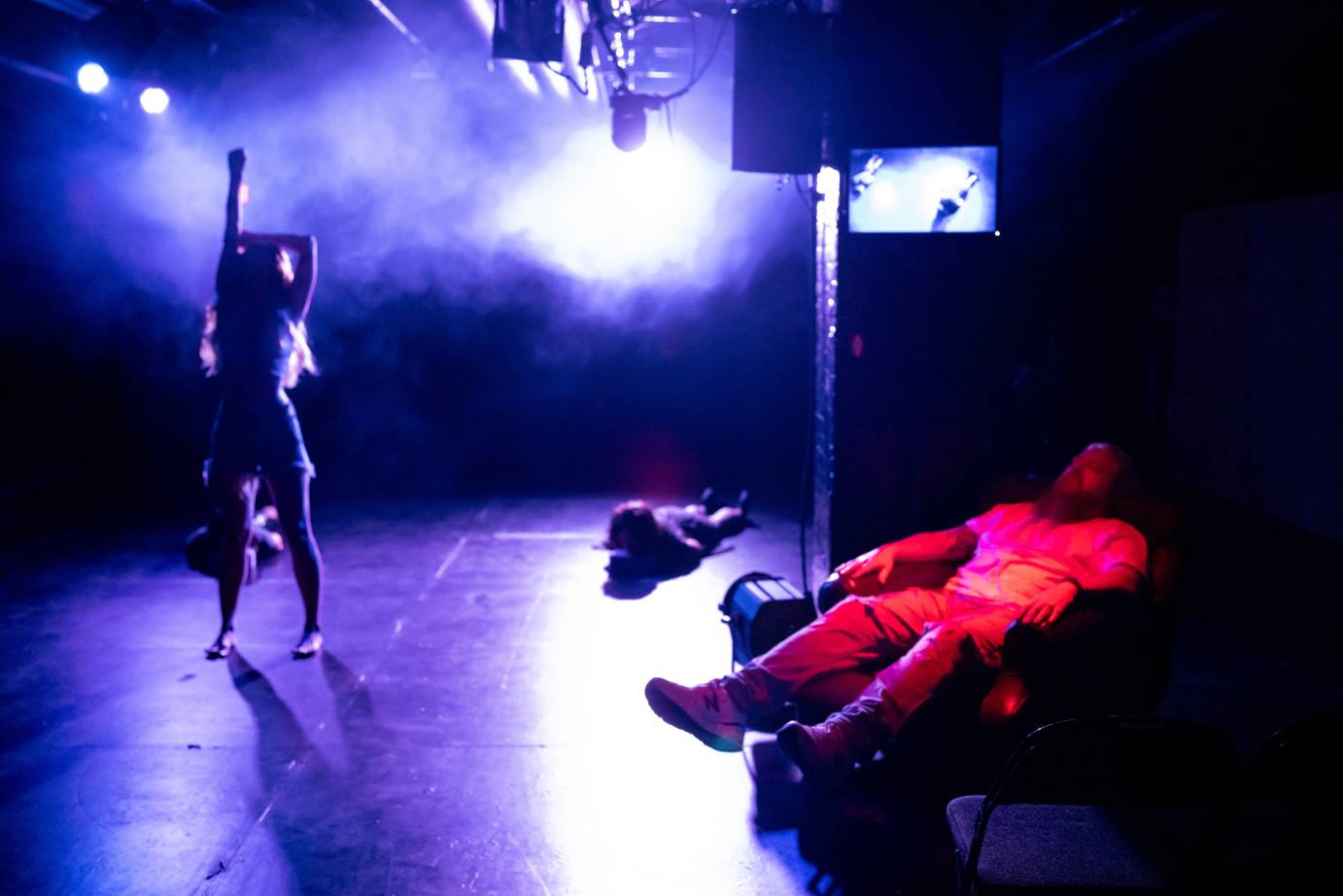
August 9, 2025: Stacy Grossfield’s “metamorphosis III” at Collapsable Hole continues the artist’s interrogation of feminine transmutational power, connecting social norms and everyday gestures to politically-inflected text, exaggerated characterizations, and pointed interjections of ballet and modern dance idioms. Alexandra Albrecht and Nola Sporn Smith, veterans of the previous two iterations of “metamorphosis,” face off yet again, reveling in petty enmities, conspiratorial intimacies, and all-out wrestling matches. Hannah Franzen, one of three ballerinas featured in “metamorphosis II,” takes a turn as a rubber-legged contortionist Barbie doll, teetering on clip-clop high heels, floating through a dreamy deadpan ballet, and flopping her limbs and joints through impossible angles. The performers’ commitment stuns at close range — the bruises are real, the blood is fake — as Grossfield weaves visceral and quotidian images of beauty, pain, exploitation, and abjection to demonstrate their tangled inextricability. “metamorphosis III” continues its own durational metamorphosis with two performances monthly through December.
August 23, 2025: I spend a sunny, windswept day at Fort Tilden Beach and walk a minor pilgrimage to reach Kim Brandt’s “Wayward,” presented by Beach Sessions Dance Series on the sand at Rockaway’s Beach 112. Brandt’s offering for a sensitive and daring group of eighteen performers celebrates the emergent, the tactile, and the in-between. A clutch of bodies writhes and bristles in slow motion as radiant limbs project and recede, silhouetted by waning sun on wind-tossed waves. As this collective body breaks apart, energetic tendrils seem to connect the performers across sand and sky, the wordless language of their nervous systems made visible through the rhythms of shape and time.

With thick tumbles and strides they skim the surf, scale the ridges of dunes, and climb vacant lifeguard stands to shape and be shaped by the wind, sun, and sea. This socioecological communion about sums up my own rather wayward summer — one of shifting embodied reflections on place, movement, and purpose. In the encroaching dusk I turn my back on the sea and brush sand from my feet, gooseflesh rippling in the first chill whisper of the season to come.




